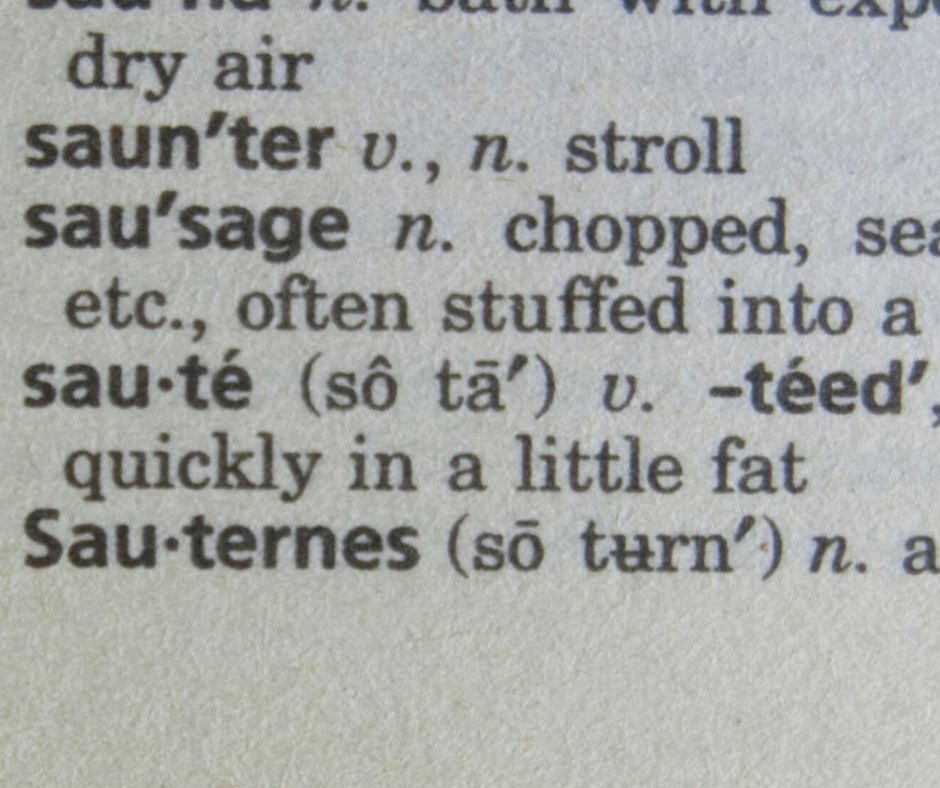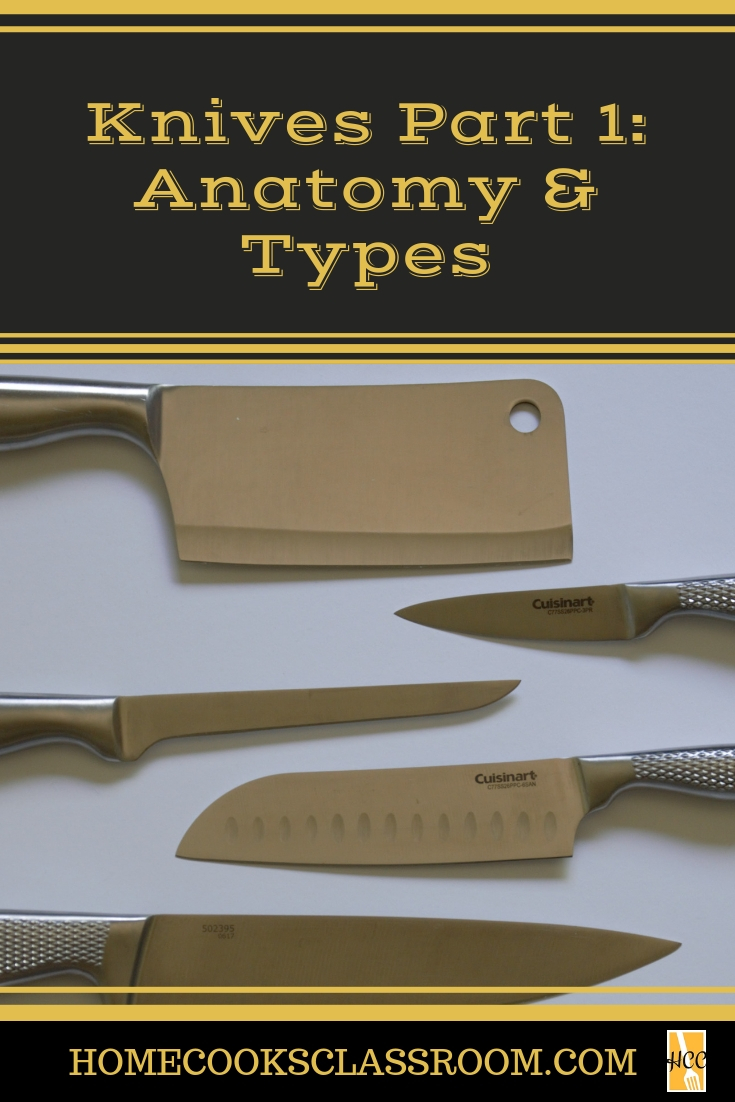
Hello class and welcome to the latest installment in our Cooking 101 series, Knives: Anatomy & Types. Because there is so much to discuss when it comes to knives, I have decided that this will be the first of three lessons concerning them. For today’s lesson, we will keep it simple and explore the anatomy of knives, their different edges, and to most common types. In the following lessons, we will discuss how to properly use knives in the kitchen, and how to maintain/store knives respectively. So to keep this intro short, let’s get into today’s lesson.
Anatomy of a knife
Now the truth is that we could all go about our cooking lives without ever knowing the different parts of knives and their proper names. Very rarely will a recipe have an instruction that asks for you to use a specific part of a knife. Nonetheless, I have always believed that in order for one to truly understand something, they must have all the knowledge they can about it, no matter how mundane it may seem. So take a look at the image below to get yourself familiarized with some of the most common parts of a knife.
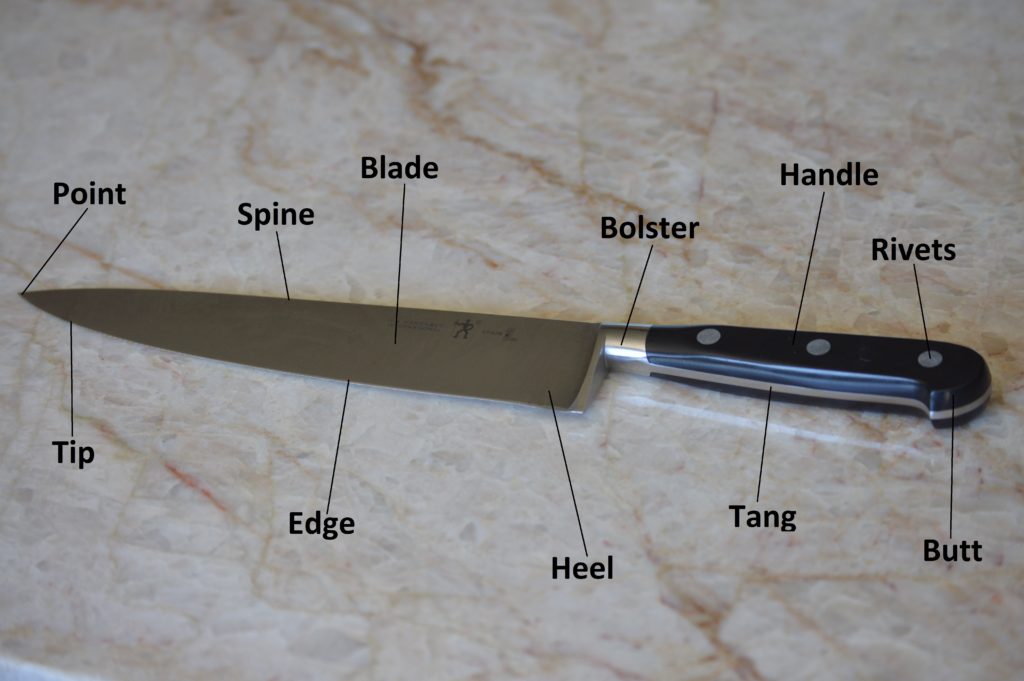
Types of knife edges
Straight Edge: This is the most common type of knife-edge, and is created by tapering the knife down at a straight angle on both sides until it creates a razor-sharp edge. The main pro of this design is that it allows for the knife to be sharpened more easily.
Chisel edge: Also known as a single bevel, a chisel edge is most often found in knives from East Asian traditions. It is essentially a straight edge except that it is only tapered down on one side, which is why it is called a single bevel. Though it is harder to maintain a sharp edge with this type of knife when it is properly sharpened it allows for the user to make extremely delicate cuts.
Hollow Ground Edge: This knife edge is created by making a conclave bevel in the knife from somewhere in its middle until it forms a delicate, but sharp edge. Knives with this type of edge are best used for cutting delicate foods such as fish.
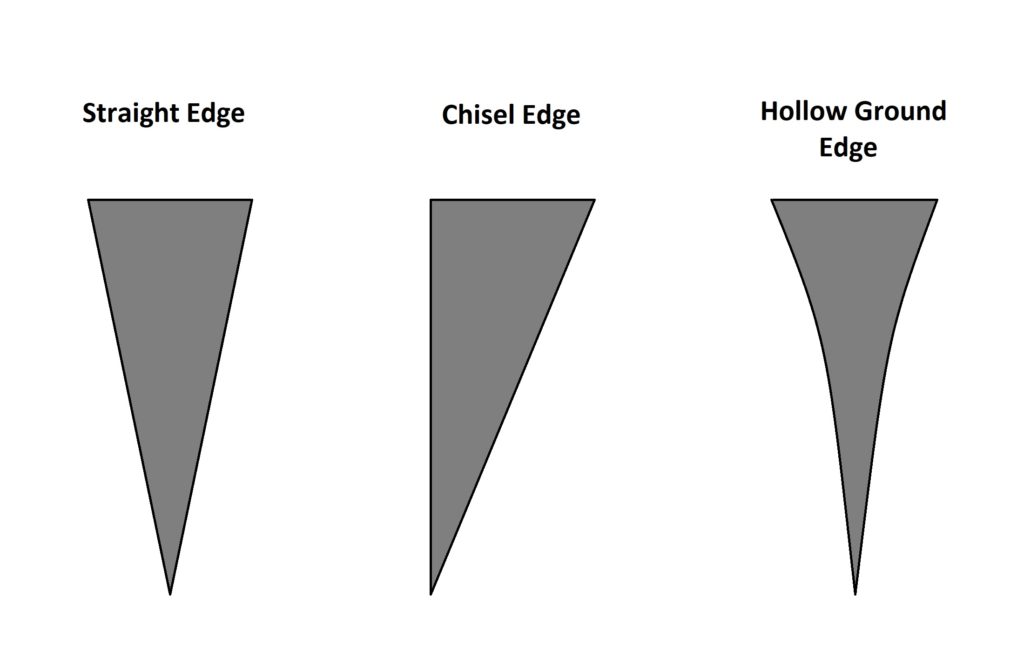
Granton Edge: A relatively newer type of edge that has gained popularity over the past decade. It is distinguishable from the other types of knife edges because it has a number of hollowed-out groves just above the edge itself on the surface of the blade. These hollowed out groves create air pockets, which allow the knife to slice without tearing or shredding whatever is being cut and make food less likely to stick to the knife.
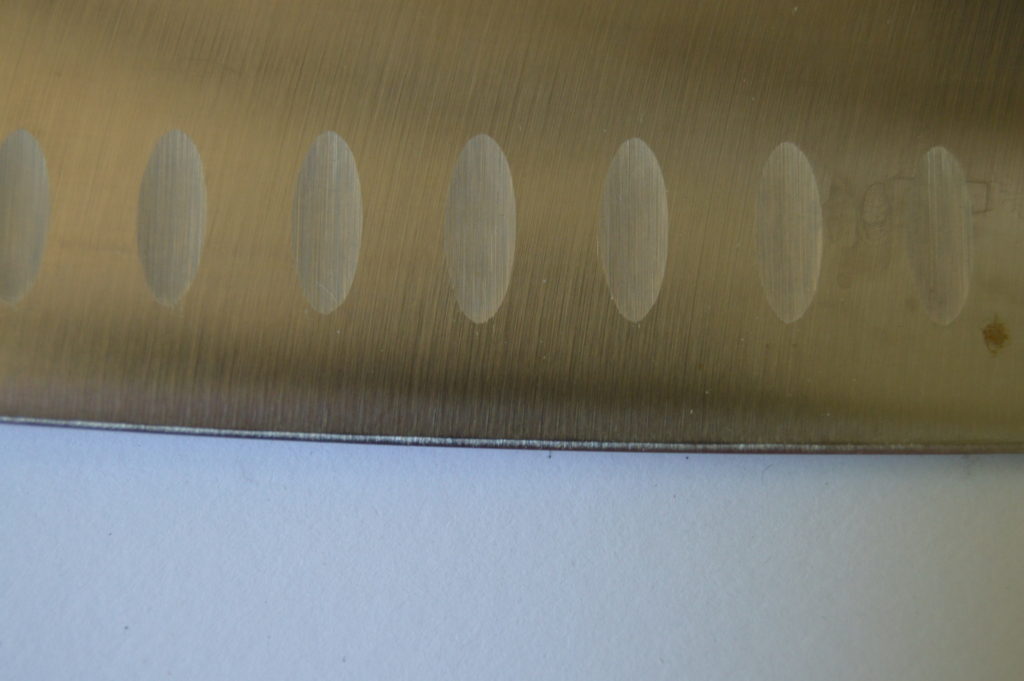
Serrated Edge: This knife edge is distinguishable from the other types of edges because of its many groves, or teeth. These groves allow the user of the knife to better penetrate food that has a hard exterior but a soft interior, such as bread. However, it is important to note that this benefit only occurs when the knife user cuts with a sawing motion instead of a straight down motion.
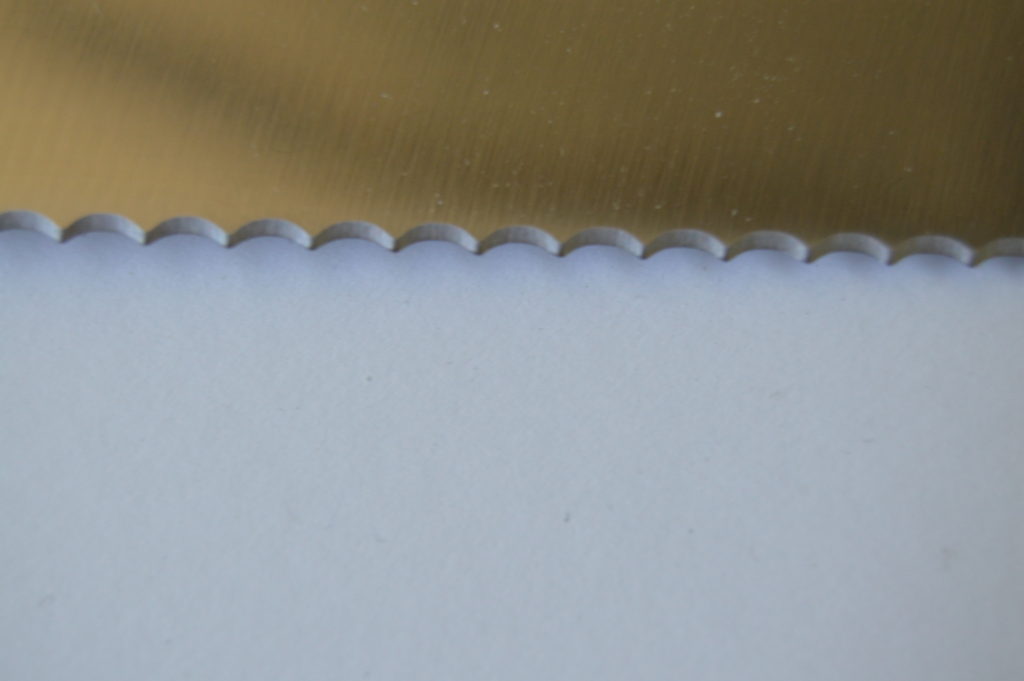
Common types of knives
Boning knife: A thin and relatively flexible knife that is used primarily to cut meat away from bones. The flexibility of the knife allows it to bend over bones to extract the most meat without damaging it.
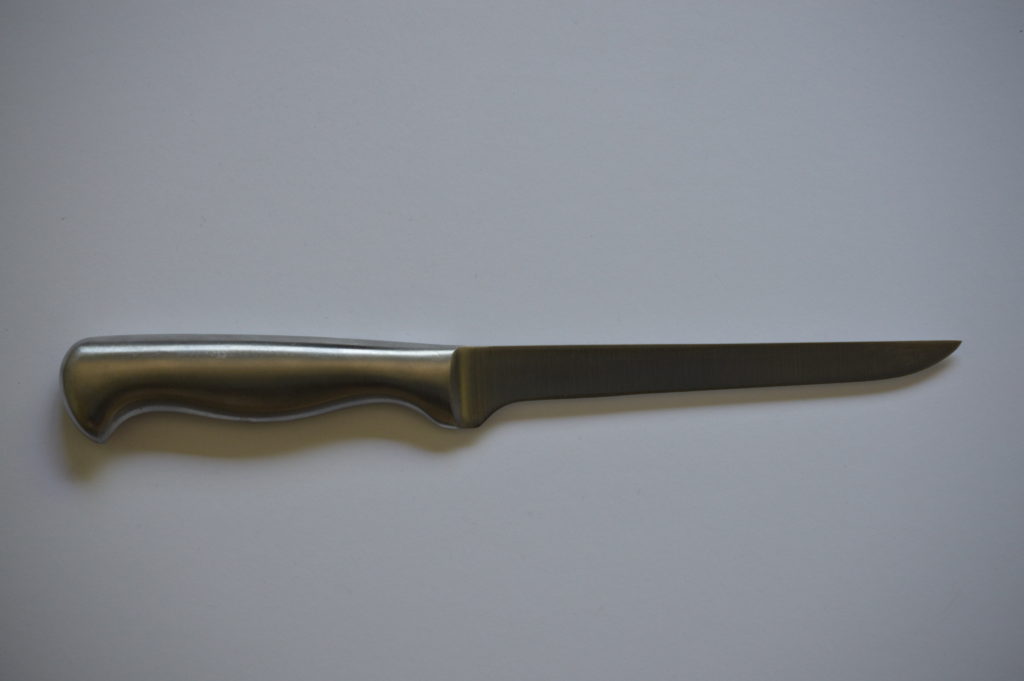
Main uses: Deboning meat, Filleting fish
Bread knife: A serrated edge knife that is used to slice bread. It is typically very long, about 7 inches to 10 inches. While it is a specialist knife it is definitely one that every cook should have, as slicing bread with any other type of knife is basically impossible.
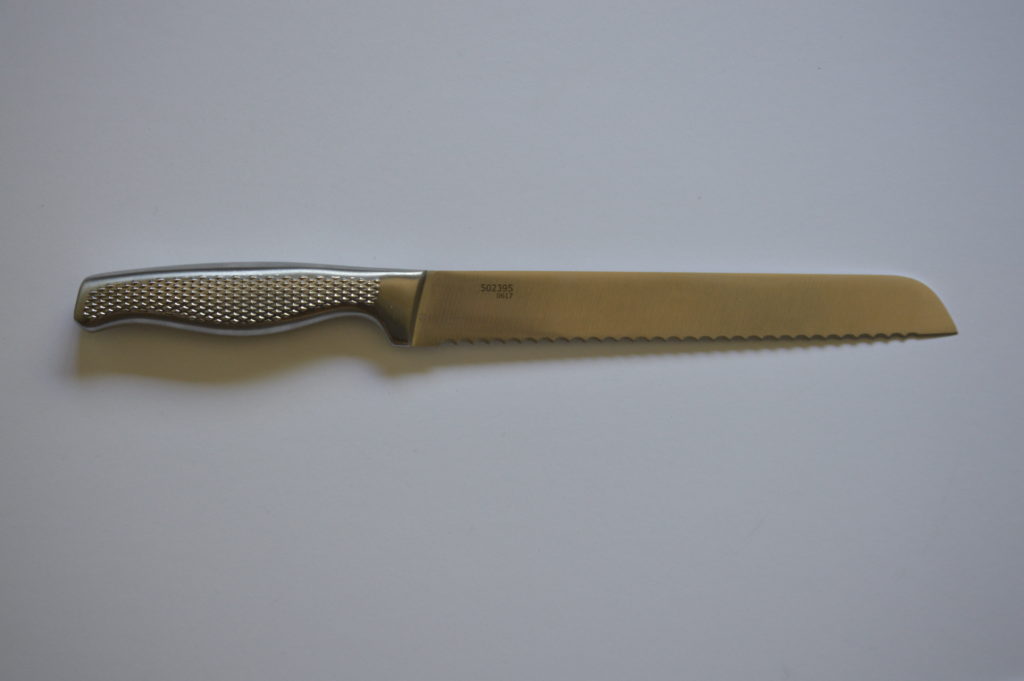
Main uses: Slicing bread, slicing hard rind fruits
Butter knife: a knife with a rather dull straight edge. Typically this knife is not part of a knife set, but still, it is an important knife that everyone should have

Main uses: Slicing up pats of butter
Carving knife: A long, thin, and sharp knife, which allows for precise and delicate cuts from large pieces of food.
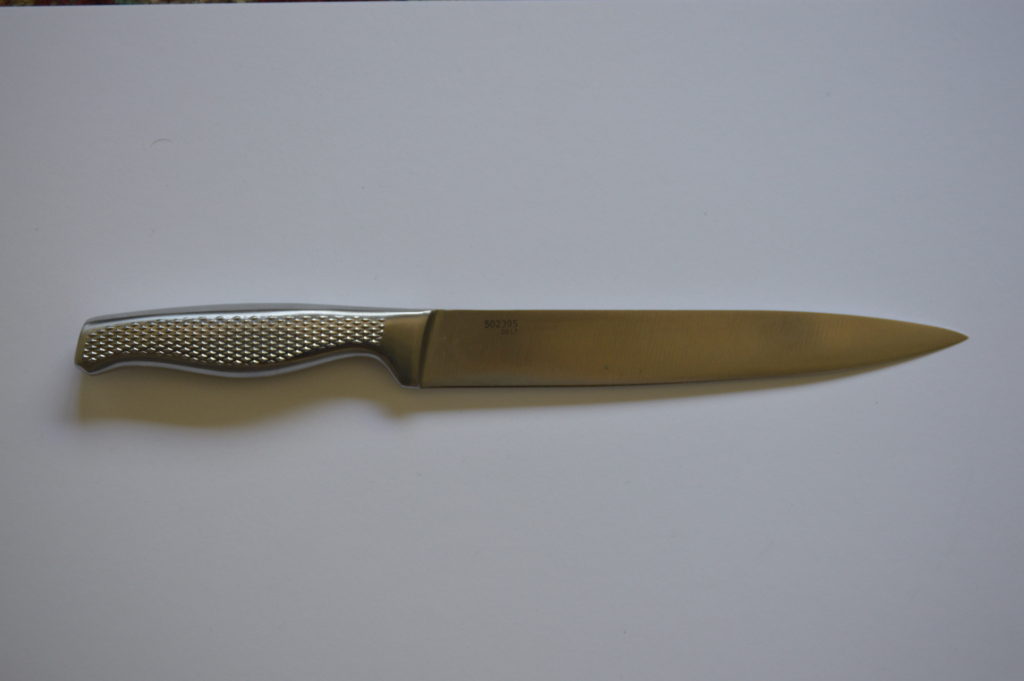
Main uses: Carving thin slices of cooked meat
Chefs knife: The knife of all knives for any home cook. It has the most utility of all knives and in essence should be able to properly perform any cutting task needed in the kitchen, besides slicing bread. If there was any knife in your kitchen that you should maintain and train with the most it would be this knife.
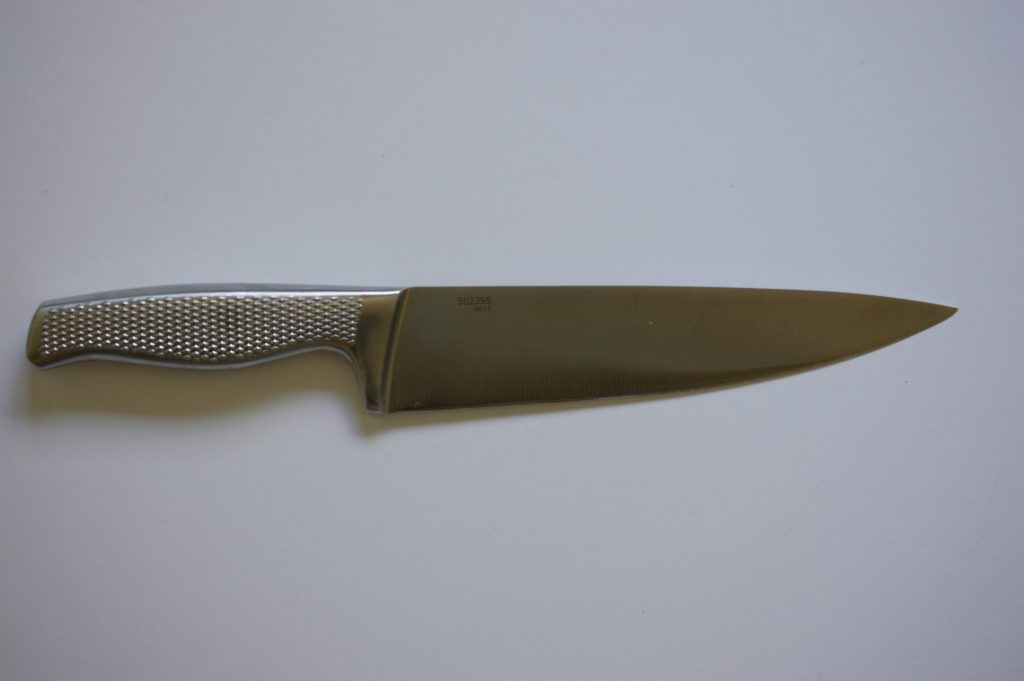
Main uses: All-purpose, except for slicing bread
Cleaver: The muscle of the knife family, a cleaver has a long and wide blade that is very tough, and durable.
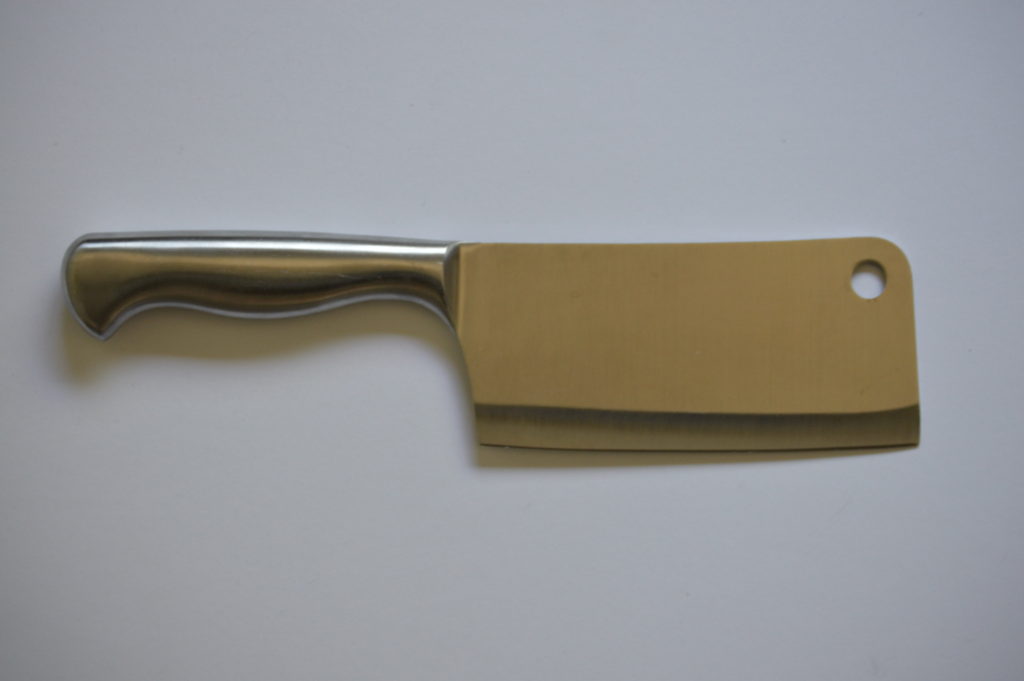
Main uses: Chopping up thick meat and breaking bones
Paring knife: This is a small and sharp knife that allows the user to produce firm but small cuts in delicate pieces of food.
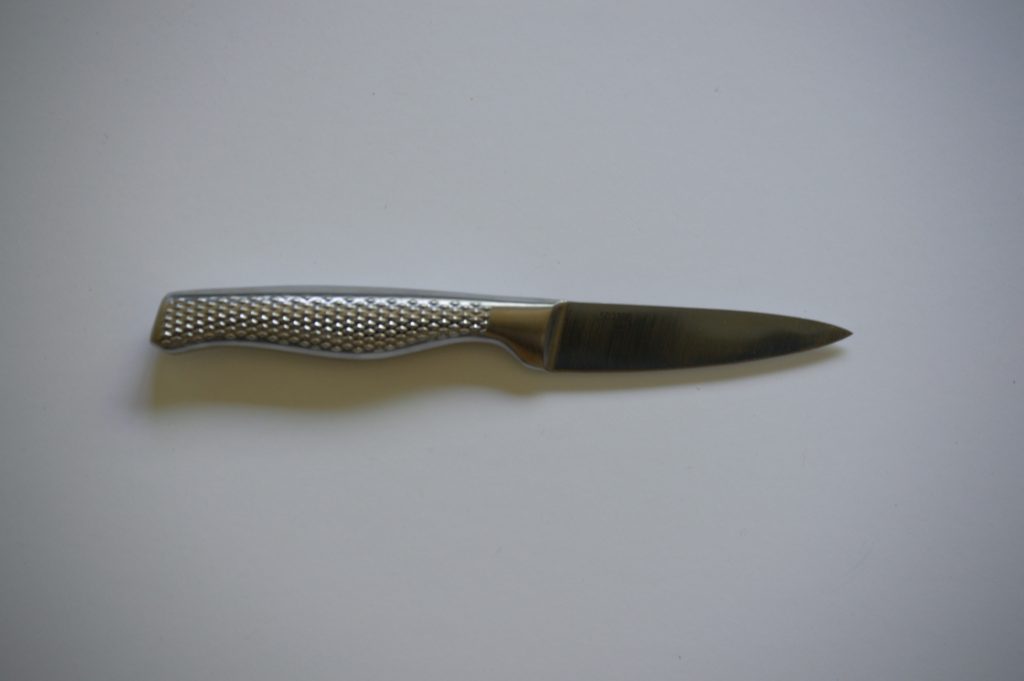
Main uses: Making shallow cuts on delicate food such as fruits and vegetables.
Santoku knife: Probably the most common of knives that can be found from the East Asian tradition of knives. In many ways, it can act and be used just as a chef’s knife.

Main uses: All-purpose, except for slicing bread
Tomato knife: In all honesty, this is probably the most useless knife on this list. Sure it cuts tomatoes better than any of the other knives on this list, but it’s not like a bread knife where it is the only knife that can properly cut a tomato. If you eat a lot of sliced tomatoes then get it if not then I would say skip it.
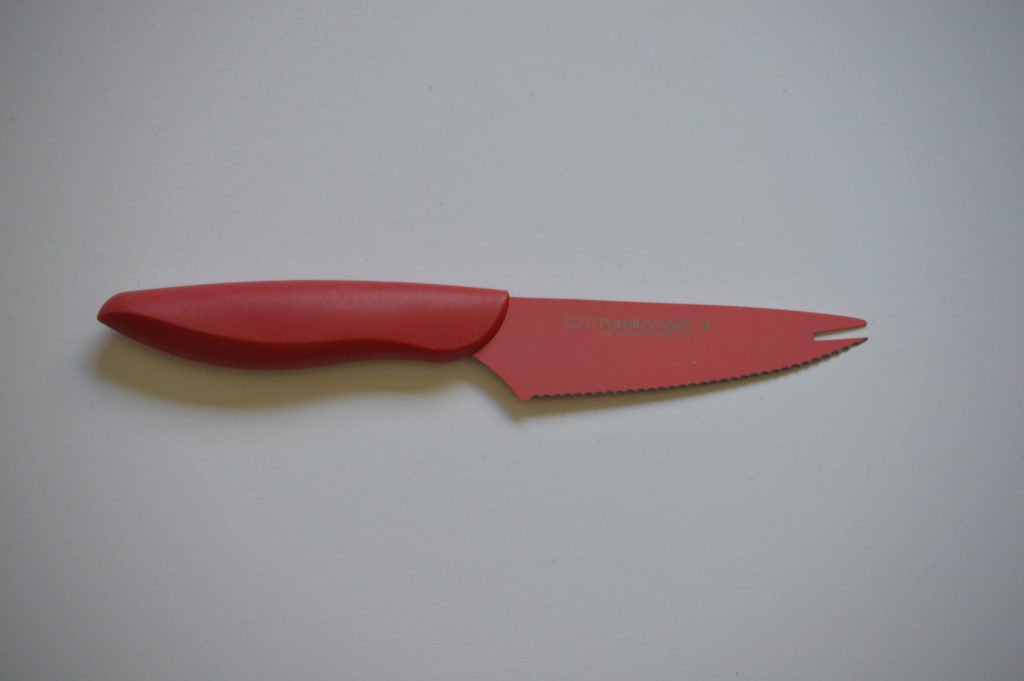
Main uses: slicing tomatoes
Honorable mention
Kitchen shears: While not technically a knife, it is should still be an important component of your cutlery set.
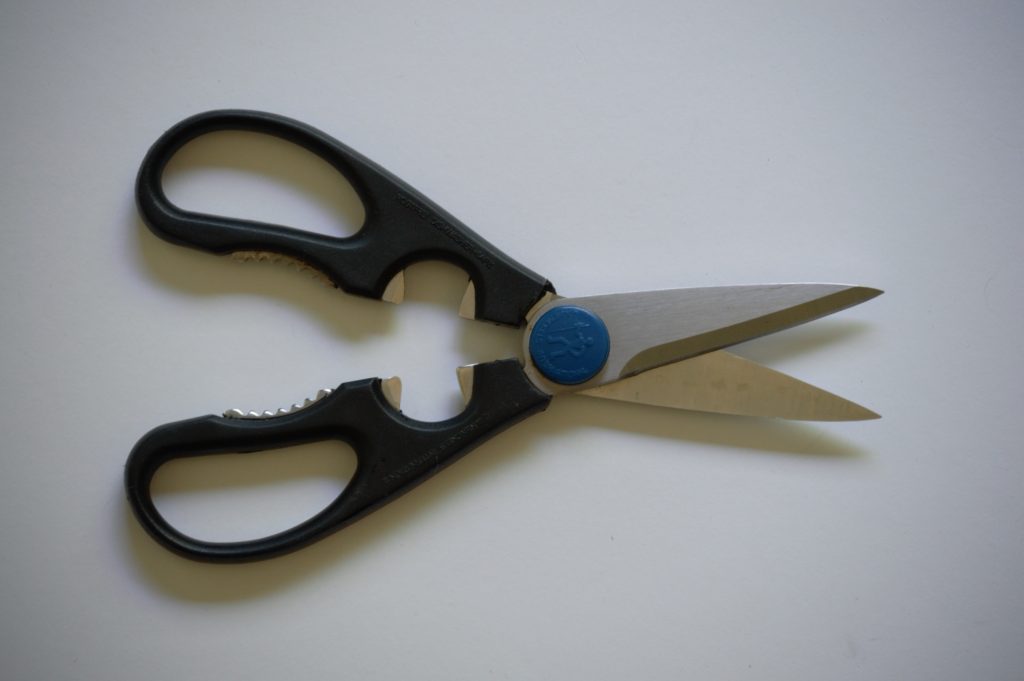
Main uses: Spatchcocking poultry, cutting fresh herbs
Next Lesson Part 2: Safety & Cuts >>>
Additional reading
From Cutco
From Webstarant Store


